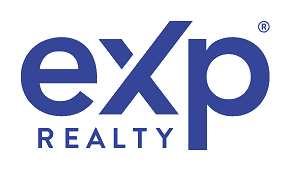Understanding trends in housing prices can be a game-changer, whether you’re a prospective home buyer, a homeowner considering selling, or a real estate investor. A chief economist can offer the right insights, helping you make informed decisions, secure lucrative deals, and enhance your financial position.
In the volatile world of real estate, knowledge is power—and that’s where we step in. In this guide, we’ll explore essential signs that can help you recognize when housing prices are about to rise to help you seize opportunities like investing in a new property or maximizing the value of your existing home.
The Importance of Tracking Housing Market Trends
Monitoring housing market trends, such as purchase prices and rates of mortgage defaults, is crucial for several reasons.
Firstly, it allows buyers and sellers to understand their area’s average and median home prices, enabling them to set realistic expectations and make savvy decisions. For investors, it provides an analytical tool to gauge the potential return on investment.
Rising housing prices can signal a robust real estate market and strong economic growth, making it an attractive prospect for investment.
Moreover, tracking trends in house prices can help predict future price growth. Noticing these trends early can give buyers an edge, allowing them to secure properties before prices skyrocket. Similarly, sellers can optimize their sales price and timing by closely following house price trends.
Tracking the signs of an impending rise in housing prices demands meticulous attention to data and trends, which can be overwhelming for some. An experienced real estate agent can provide expert analysis and help make sense of the complexities of the housing market.
Leveraging this expertise can help potential buyers, sellers, and investors make strategic decisions based on possible future housing price increases.
Understanding the indicators of a rise in housing prices, such as the Case-Shiller indexes and other house price indexes, could significantly shape your real estate strategies and decisions.
Sign 1: Low Inventory Levels
Low housing inventory is among the most reliable indicators of rising housing prices. When there are fewer homes for sale on the market than there are interested buyers, the basic principles of supply and demand come into play.
Keeping track of the inventory of homes for sale can provide insights into housing market conditions, which is good news for sellers. With more competition for limited properties, buyers often find themselves in bidding wars, pushing prices higher.
Several factors can lead to low inventory levels. A thriving economy with high consumer confidence and spending can stimulate housing demand, causing a home shortage. Conversely, existing homeowners may hesitate to sell during economic uncertainty, exacerbating the inventory shortage.
A recent report from the United States Census Bureau illustrates this correlation vividly. As of the previous month, housing inventory in major markets like San Francisco and San Antonio was at record lows. This has led to consecutive months of price appreciation, with median prices in these metropolitan statistical areas rising by over 10%.
Low inventory levels are thus a clear sign that housing prices are increasing. Buyers, sellers, and investors should pay close attention to housing inventory levels in their markets to predict changes in house prices.
Similarly, keeping a pulse on new housing developments and construction projects can offer insight into potential shifts in inventory. An increase in construction could hint at a future rise in inventory, which might balance demand and slow price growth, while a slowdown could indicate the opposite.
Moreover, there’s a need to monitor trends and shifts in housing supply across different housing types, whether single-family properties, apartments, or condos. Housing demand patterns may differ, influencing price trends in these various segments.
Sign 2: Increasing Demand for Housing
Another telltale sign of escalating housing prices is the increasing demand for housing. Multiple factors can spur this demand, including:
- Population growth
- Demographic trends
- Economic conditions
For instance, an influx of millennials reaching the prime age for home buying can significantly bolster housing demand. Moreover, improving economic conditions such as low unemployment rates and growing disposable income can enable more people to afford homes, thereby increasing demand.
A National Association of Realtors survey found 70% of first-time home buyers to be young millennials in 2020. Consequently, median home prices across the United States have seen appreciable growth rates.
Cities such as San Francisco and San Antonio are prime examples of this trend. The vibrant tech industry in San Francisco and the growing economic opportunities in San Antonio have attracted a surge of young professionals. This influx has led to an increased demand for housing, translating into soaring real estate prices.
This demographic shift also changes the types of properties in demand. For example, millennials might prefer urban, amenity-rich condos or townhouses, causing prices in this segment to increase faster than traditional single-family houses.
Additionally, migration trends can significantly impact housing demand, influencing home prices. For instance, remote work trends can spur a shift in population from high-cost urban areas to more affordable suburban or rural areas, affecting housing demand and, consequently, prices in these regions.
Sign 3: Low Mortgage Rates
Low mortgage rates are a potent driver of escalating housing prices. Mortgage rates and house prices share an inverse relationship: when mortgage rates are low, housing demand, and thus prices, typically rise. Low rates make mortgage payments more affordable, encouraging potential buyers to enter the market.
Low mortgage rates also expand the pool of prospective buyers. As monthly payments decrease, homes become affordable to a broader group. Consequently, more people can qualify for mortgages, heightening competition and increasing housing prices.
In the current market, mortgage rates, while still low, have increased compared to a year ago. According to Freddie Mac’s Primary Mortgage Market Survey, 30-year fixed-rate mortgages increased by 1.45% compared to last year.
Potential changes in monetary policy, such as adjustments to the Federal Reserve’s interest rates, can significantly impact mortgage rates. Keeping abreast of such macroeconomic policy shifts can provide valuable clues about future mortgage rate trends and the likely impact on housing prices.
Global economic events and indicators, such as inflation and GDP growth, can influence mortgage rates. A broader understanding of the global economic landscape can provide further context and foresight into potential housing price changes.
Sign 4: Positive Economic Indicators
Economic indicators significantly influence the trajectory of housing prices. Positive trends in job growth, income levels, and consumer confidence often precede rising housing prices.
Job growth directly impacts housing prices by influencing demand. When job growth is robust, more individuals have stable incomes and can afford a house, thereby driving up demand and prices.
For example, in recent years, Austin has experienced significant job growth, especially in the technology sector. The increased job opportunities have led to a surge in population as more people move to Austin for work. This population influx has put immense pressure on the housing market, leading to a shortage of available homes and substantial price appreciation.
Income levels also play a critical role. When income levels rise, people can afford more expensive homes, pushing up the average and median prices in a housing market.
Consumer confidence is another key indicator. When people are optimistic about their financial position and the state of the economy, they are more likely to purchase homes. According to the Conference Board, consumer confidence in the United States has grown. This increased confidence can spur housing demand and, consequently, prices.
Investment inflows into the real estate market could signify bullish sentiment, potentially pointing to a price uptrend. Institutional investors, real estate investment trusts (REITs), and individual investors contribute to this dynamic. A surge in real estate investment may signal increasing confidence in the market and can drive up home prices.
On a local level, an increase in real estate investments could indicate that an area is being earmarked for development or gentrification, which may cause an upward trend in local housing prices.
Sign 5: Urban Development and Gentrification
Urban development projects and gentrification can lead to a significant rise in housing prices. These initiatives often involve renovating and improving previously neglected areas, making them more attractive to potential buyers.
Urban development projects can bring new amenities, services, and transportation options to an area, making it a more desirable place to live. For instance, in Cook County, Chicago, a series of development projects over the past decade has revitalized several neighborhoods, driving up housing prices.
Gentrification, a form of urban development where wealthier people move into an economically disadvantaged neighborhood, can also cause housing prices to skyrocket. As more affluent individuals move in, property values rise, often leading to a significant increase in housing prices.
For example, Brooklyn‘s neighborhoods, such as Williamsburg and Bushwick, have experienced significant gentrification over the past two decades. Housing prices soared as these areas underwent urban development and attracted young professionals and artists.
Likewise, zoning laws and regulations can impact housing prices by influencing new housing supply. Tighter restrictions can limit new development, reduce housing supply, and increase housing costs. Therefore, watching for changes in local zoning laws and regulations can offer important clues about future housing price trends.
Besides, public infrastructure and transport development plans can also signal future housing price increases. Projects such as new highways, transit lines, or schools can boost the appeal of a neighborhood, potentially leading to a rise in property values.
Sign 6: Rising Construction Costs
Rising construction costs can be a significant driver of increasing housing prices. These costs encompass labor, materials, and land, all of which have been on an upward trajectory in recent years.
Labor costs have been rising due to shortages in the construction workforce. Aging workforces and a lack of new entrants into the field have increased labor costs, affecting overall construction costs.
Currently, the U.S. construction industry faces a massive labor shortage. This shortage is influenced by various factors, including a lack of younger workers entering the skilled trades and many experienced workers reaching retirement age.
Material costs are also a critical factor. From lumber to concrete and steel, increases in the price of building materials have been dramatic, driven mainly by supply-chain disruptions and trade tariffs.
For example, the National Association of Home Builders reported that in just one year, between April 2020 and 2021, lumber prices tripled, adding an estimated $36,000 to the cost of building a new single-family home.
Land costs, particularly in metropolitan statistical areas, are also rising due to scarcity and increased demand, adding to the cost of constructing new homes.
When construction costs rise, builders may pass on these costs to buyers, leading to higher single-family house prices. Alternatively, if costs are too high, builders may opt to construct fewer homes, leading to a shortage of homes for sale, which can also drive up prices due to increased competition among buyers.
Conversely, advancements in construction technology or increased efficiencies could help moderate rising construction costs. Innovations such as prefabrication or 3D printing could reduce construction costs and timeframes, indirectly impacting housing prices. Keeping an eye on such industry developments can offer insights into future housing price trends.
A change in the pricing policies of raw materials, changes in labor laws, or shifts in the cost of borrowing for construction firms can all affect construction costs. Monitoring these aspects can provide additional context to anticipate the movement of housing prices.
Understanding these signs of potential increases in housing prices can help buyers make informed decisions. If you’re considering entering the housing market, it might be beneficial to seek advice from a professional real estate agent who can provide detailed descriptions of current market trends.
Key Takeaways
As we have explored, several vital signs indicate that housing prices are rising. These include low inventory levels, increased housing demand, low mortgage rates, favorable economic indicators, urban development, gentrification, and rising construction costs.
Understanding these trends and indicators is vital for anyone considering buying or selling a home. Monitoring these signs allows you to gauge the market’s direction and adjust your strategy accordingly.
Knowing when prices will likely increase can help buyers decide the best time to enter the market. This knowledge can guide sellers when to list a home for the best possible price.
The implications of a rising housing market extend beyond individual buyers and sellers. Investors and financial institutions can use this information to assess potential investment opportunities and risks. Similarly, policymakers can use these insights to inform decisions about housing policy and urban development strategies.
As housing markets evolve, staying informed and agile will be key to navigating these changes successfully. However, understanding the complexities of the housing market can be challenging, and the guidance of a real estate professional can be invaluable.
Whether you’re looking to buy or sell, an eXp agent can provide insights and advice tailored to your unique needs and the current market conditions.
Take action today by visiting eXp Realty to search for properties and sign up to get alerts of new listings when they come on the market. Knowledge is power, and staying informed about housing market trends will empower you to make the best decisions for your financial future.
FAQs: Housing Prices
Here are some frequently asked questions buyers, sellers, and investors have regarding housing prices in the real estate world.
How is the U.S. housing price index calculated?
The U.S. housing price index is a measure that tracks changes in the average prices of residential properties over time. It’s calculated using the “repeat-sales method,” widely recognized and adopted by various institutions, including government agencies and private organizations.
The U.S. Housing Price Index is regularly published by various organizations, including the Federal Housing Finance Agency (FHFA HPI) and the CoreLogic S&P Case-Shiller index.
Are house prices rising in the USA?
Although house prices fluctuate depending on several factors, as of the most recent data, house prices in the U.S. have been experiencing growth. This can be due to several factors, including millennials now entering the housing market and people increasingly investing in more properties.
Why are housing prices and rents rising faster than inflation?
The primary reasons housing prices and rents are rising faster than inflation include a shortage of homes for sale, increased demand due to demographic shifts, low-interest rates, and rising construction costs. Additionally, economic growth in some metropolitan regions has increased demand for housing, further driving up prices and rents.
If the housing market collapses and house prices drop, would rent drop along with house prices?
A housing market collapse typically results in a decrease in house prices. However, the impact on rents can vary depending on various factors, including the level of housing demand, the number of rental properties available, and local economic conditions.
In some cases, rent prices may not immediately mirror the changes in house prices. Landlords may be locked into existing rental contracts or reluctant to reduce rent immediately, even if the housing market experiences a sharp decline.
Will house prices go down in 2023?
Predicting future housing market trends can be challenging due to many factors involved. However, monitoring key indicators of house price such as:
- Housing inventory
- Mortgage rates
- Economic indicators,
- Demographic trends
All of these can provide insights into potential future price movements. Consult with a real estate professional for the most accurate and tailored advice.









